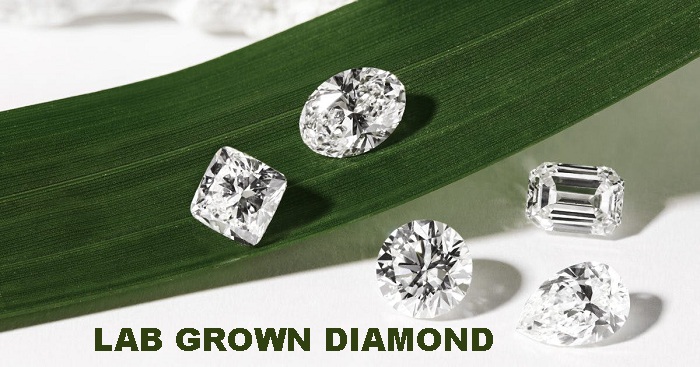
Lab grown diamond : What is lab grown diamond or lab created diamond which is also known as lab made diamond ? Everything you need to know about the production of lab grown diamonds.
Lab-grown diamonds, also known as synthetic diamonds or cultured diamonds, are diamonds that are created in a laboratory setting using advanced technology. They are chemically, physically, and optically identical to natural diamonds, but are created in a fraction of the time and at a fraction of the cost.
Lab-grown diamonds are created using two main methods: High Pressure High Temperature (HPHT) and Chemical Vapor Deposition (CVD). In HPHT method, a small diamond seed is placed in a chamber and is subjected to high pressure and high temperature, replicating the conditions under which natural diamonds are formed in the earth. In CVD method, carbon atoms are deposited onto a substrate in a low-pressure chamber, where they form into a diamond crystal.
Lab-grown diamonds are becoming increasingly popular as an alternative to natural diamonds, as they are more environmentally friendly and ethically responsible as well as being more affordable.
It’s important to note that lab-grown diamonds are now graded and certified, so consumers can be sure about the quality of their purchase and compare it with natural diamonds.
Lab Grown Diamond Products
Among the lab grown diamond products are Lab grown diamond rings, lab grown diamond engagement rings, lab grown diamond earrings. As these products are as quality as mined diamonds, lab grown diamond prices are relatively cheaper. There is an about 30% price difference between prices for real diamond and lab grown diamon products.
is lab grown diamond cheaper ?
Lab-grown diamonds are generally cheaper than natural diamonds. The cost of producing a lab-grown diamond is significantly less than the cost of mining a natural diamond, as the lab-grown diamonds are created in a controlled environment using advanced technology. As a result, lab-grown diamonds can be sold at a lower price point than natural diamonds of the same size, quality, and clarity. However, the price difference between lab-grown and natural diamonds can vary depending on the size and quality of the diamond, so it is important to compare prices and make sure you are getting a good value for your money. Also, it’s worth noting that lab-grown diamonds have a higher price range than natural diamonds, so it’s possible to find a lab-grown diamond that is more expensive than a natural diamond of a similar quality.

Lab-grown diamonds have emerged as a fascinating alternative to naturally occurring diamonds. These diamonds are created in controlled laboratory environments using advanced technological processes that mimic the conditions under which diamonds form in the Earth’s mantle.
Lab-grown diamonds possess the same chemical composition, crystal structure, and physical properties as natural diamonds. They are optically and chemically indistinguishable from their mined counterparts, making them a desirable choice for individuals seeking ethically and environmentally conscious alternatives.
One of the significant advantages of lab-grown diamonds is their reduced impact on the environment. The process of creating these diamonds requires fewer resources and eliminates the need for mining, reducing the ecological footprint associated with traditional diamond extraction.
Furthermore, lab-grown diamonds offer a transparent supply chain, as their origin and production methods can be precisely tracked and verified. This traceability provides consumers with peace of mind, knowing that the diamonds they purchase are free from the ethical concerns often associated with the diamond industry.
As lab-grown diamonds continue to gain popularity, they are challenging the traditional diamond market and prompting conversations about sustainability and responsible consumption. Their accessibility, coupled with their ethical and environmental benefits, make them an exciting development in the realm of jewelry and a reflection of changing consumer preferences.